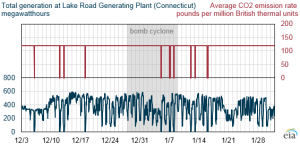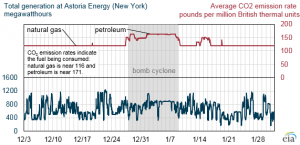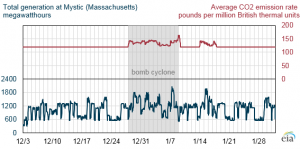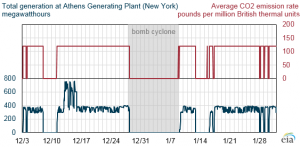Power generation in New England and New York is largely dependent on natural gas, which accounts for more than half of the region’s electricity generating capacity. About 58% of New England’s natural gas capacity has dual-fuel capability, meaning it can switch to other fuels such as petroleum-based fuels. Data from the U.S. Environmental Protection Agency’s (EPA) continuous emissions monitoring system (CEMS) reveals how certain plants in New England and New York switch between fuels in certain situations.
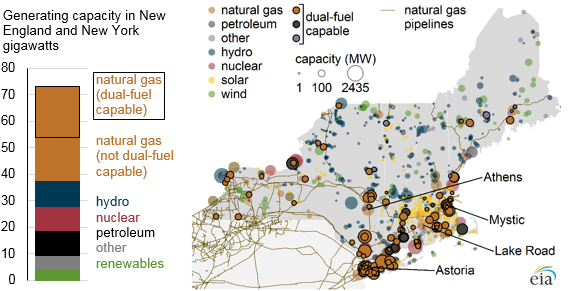
The bomb cyclone event, which spanned from December 28, 2017, to January 8, 2018, highlighted the value of dual-fuel capability when unusually cold weather created additional demand for natural gas for heating which, in turn, reduced the availability of the fuel for electricity generation. During this event, several dual-fuel capable generators switched from natural gas to petroleum to continue generating electricity.
CEMS measures both carbon dioxide (CO2) emissions and the consumed energy input for each power plant. The relative values of CO2 emissions and energy inputs can be used to determine the energy source burned. For example, the combustion of natural gas produces 117 pounds (lbs) of CO2 per million British thermal units (MMBtu), and petroleum, which has a higher carbon content, produces 161 lbs of CO2/MMBtu.
Reviewing a plant’s operating profile over time can reveal how it reacts to events that affect electric reliability. The following examples show how different types of plants reacted during the cold weather event of late December 2017 and early January 2018.
